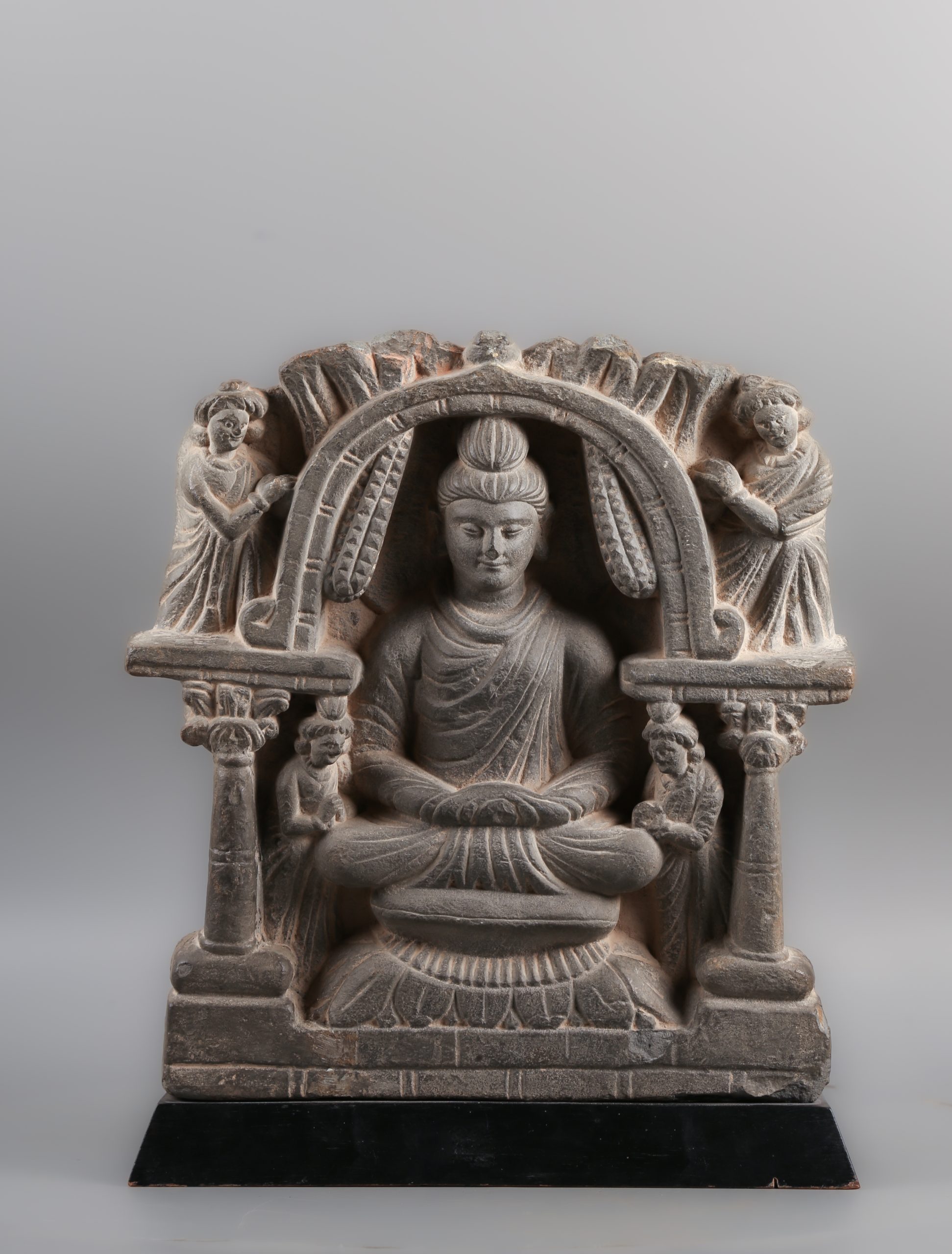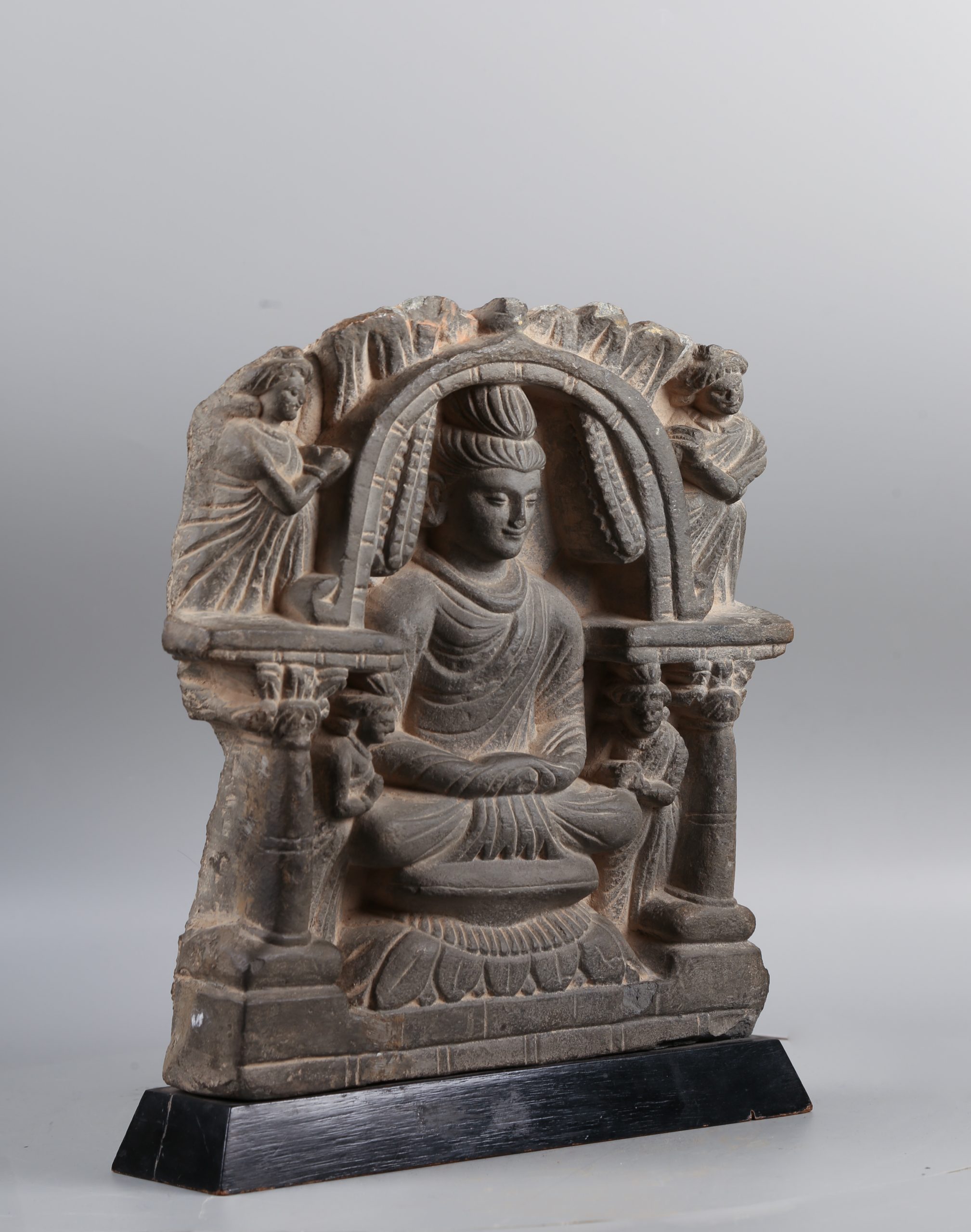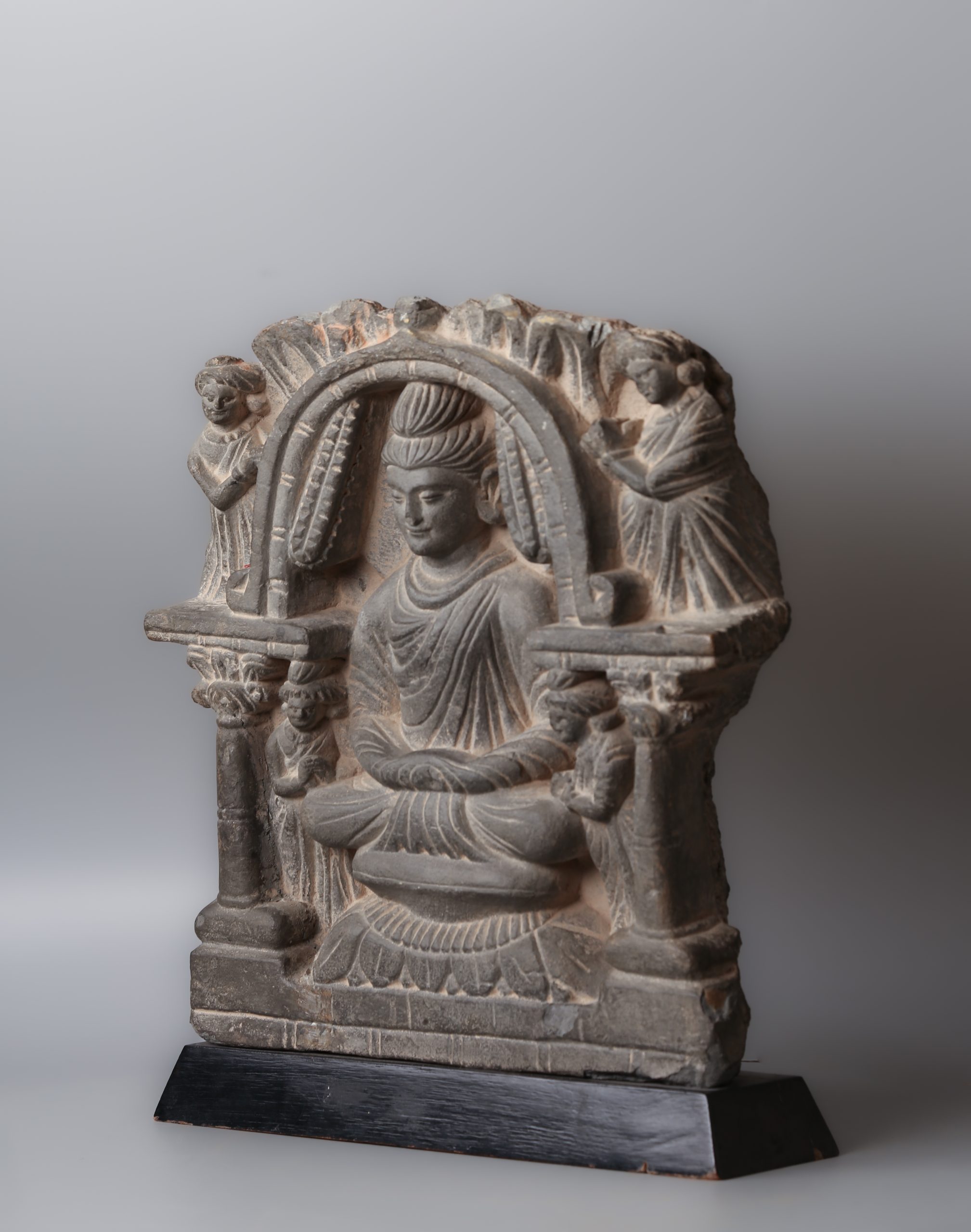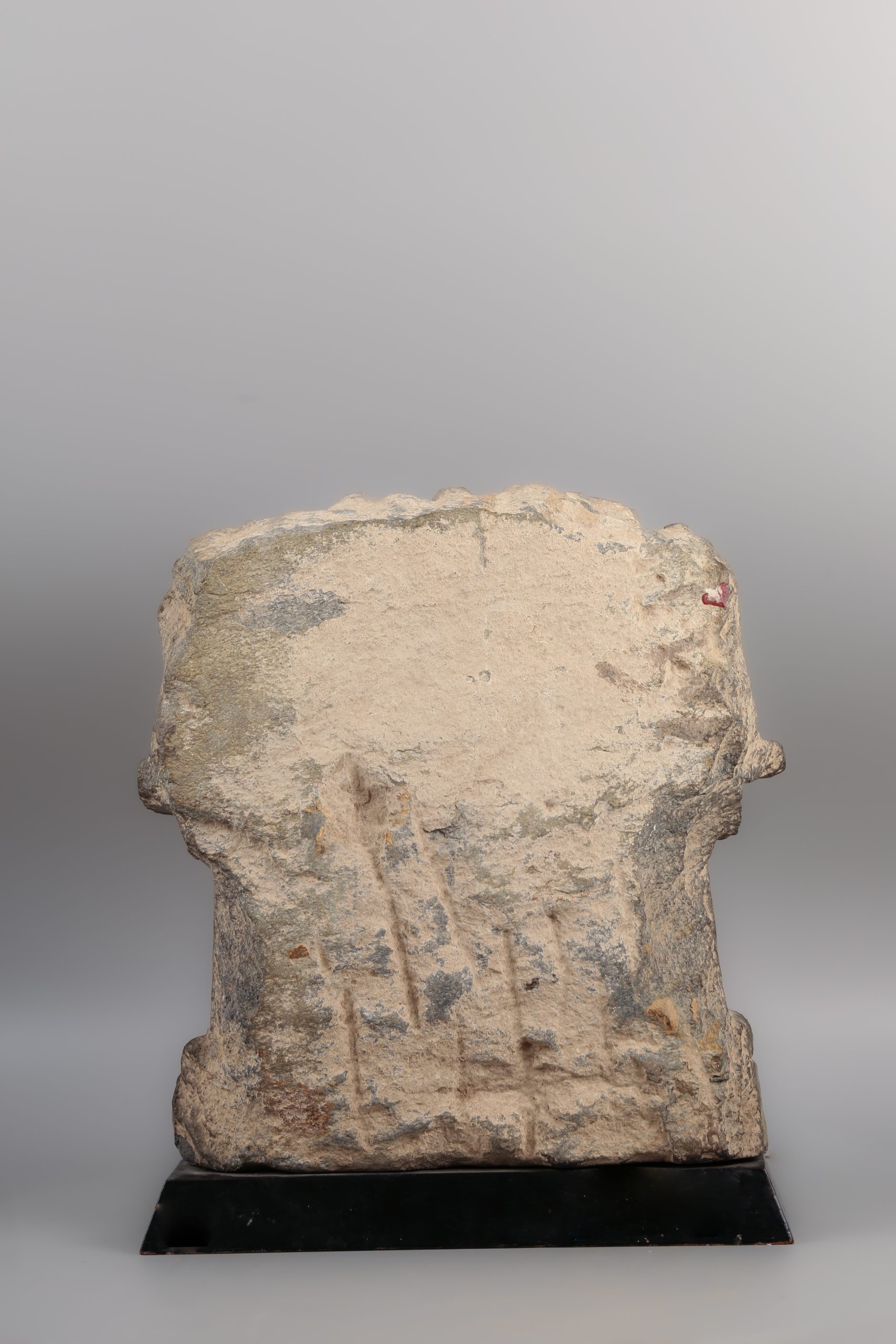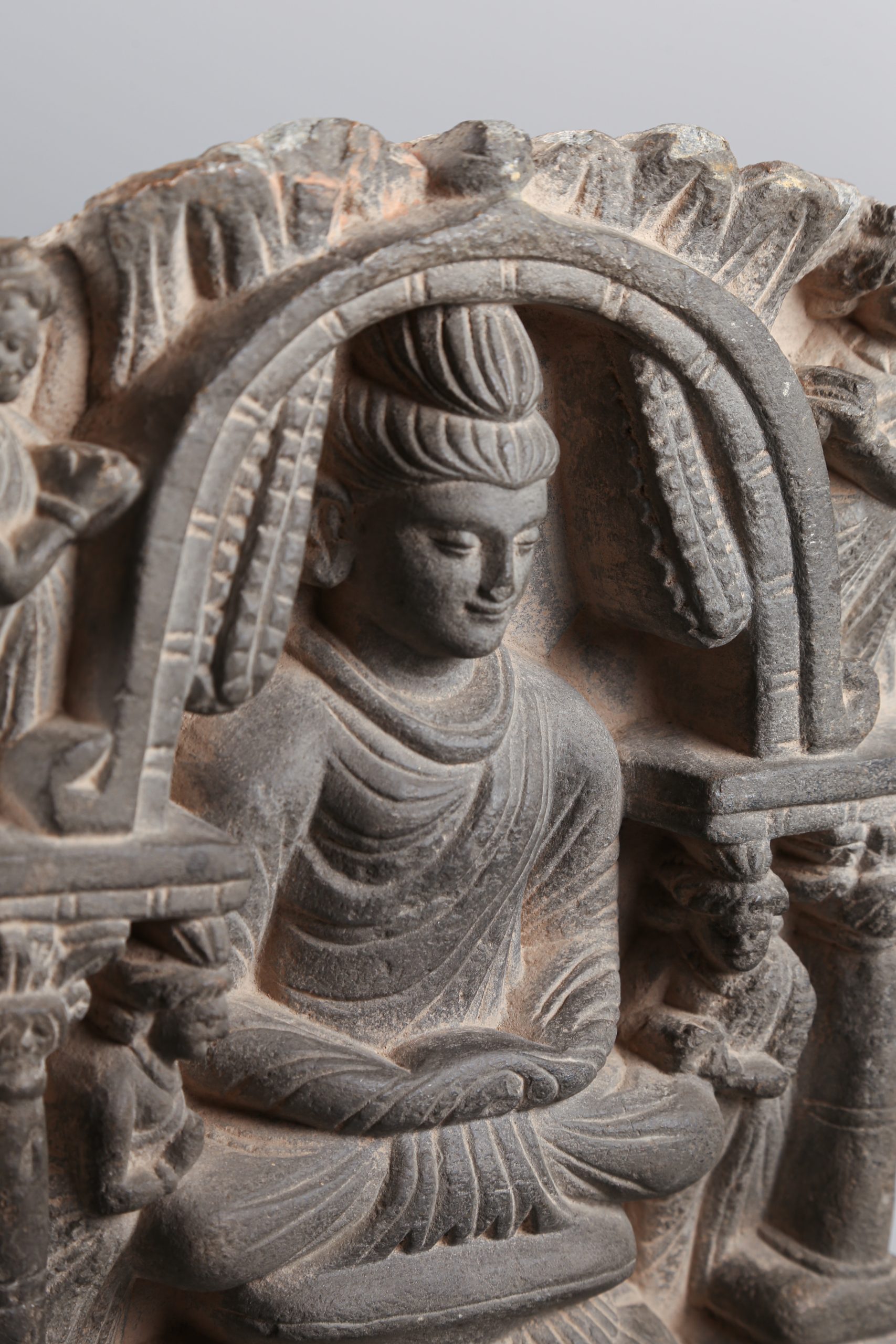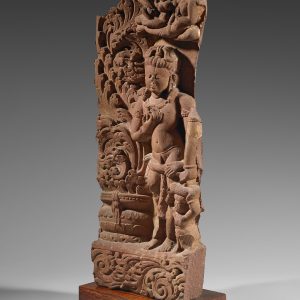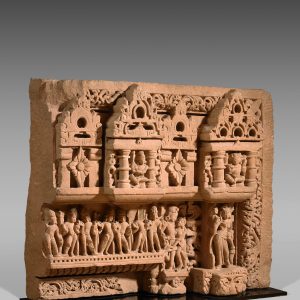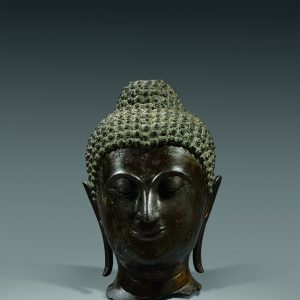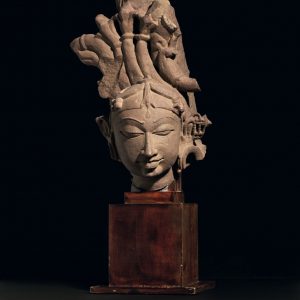Frieze of Buddha
Schist
Ancient region of Gandhara
III-IVth century
H. 28 cm
Description
This work comes from the ancient Gandhara region, which encompassed parts of Afghanistan, Pakistan and northern India. The Buddha is depicted here seated on a lotiform base. The Blessed One can be recognised by his monastic costume, here covering both his shoulders, and the protrusion of his skull (uṣṇīṣa), and his distended earlobes, revealing his past wealth. He is depicted in a meditative position, with his hands in his lap. Four orants or bodhisattvas pay homage to him.
This sculpture is characteristic of the art of the Gandhāra region, particularly the wet drapery with its concentric folds, which reflects a Hellenistic influence that testifies to exchanges and contacts between civilisations, as does the architecture that frames the Buddha. All the characteristic qualities of this region can be found here, combining the finesse of Hellenistic realism with the iconographic codes of the Buddhist religion.
Coming from Central Asia, the Kuṣāṇa rulers (1st-3rd centuries) were the main patrons within this geographical area, and it was under their impetus that the art of the Gāndhāra underwent tremendous development. It was a veritable empire, encompassing territories from Uzbekistan to northern India. This powerful kingdom was at the crossroads of many influences, thanks in particular to the caravan trade and the Silk Road.
This syncretic style, so original in Buddhist art, enjoyed great posterity in the Gāndhāra, ensuring its popularity.
Provenance: Cabinet Portier, Briest sale in 1983, then private collection in Paris.

